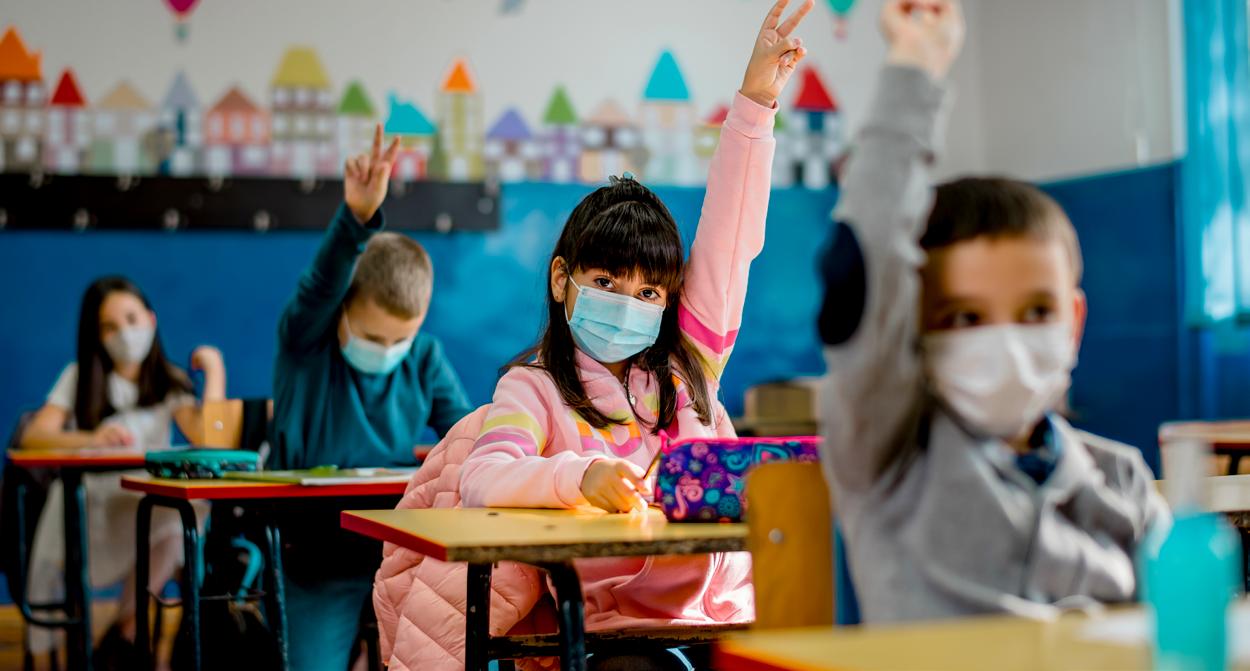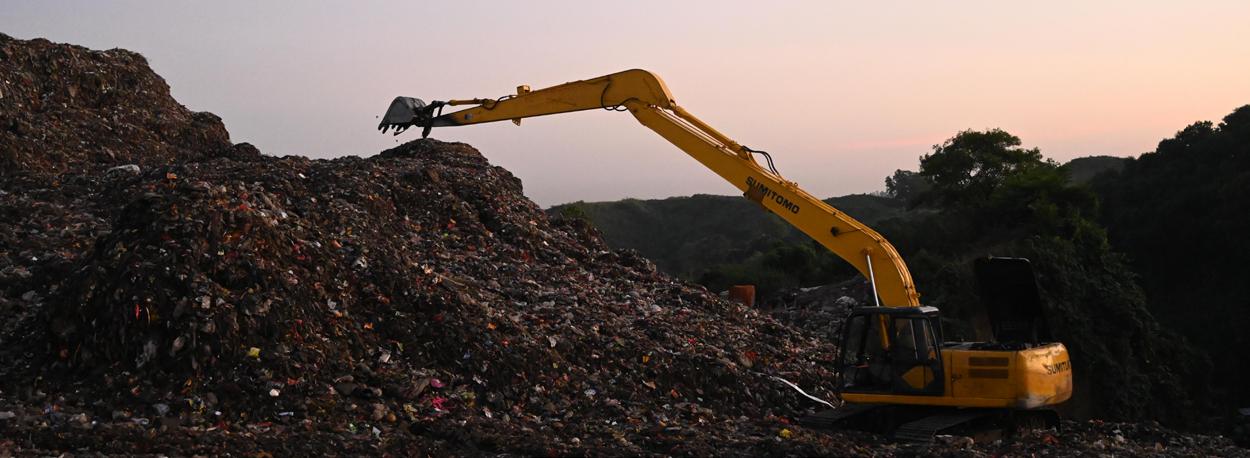
15 minute read
Africa Union 2063 Unpacked
AFRICA UNION 2063
BY CHARNDRÉ EMMA KIPPIE
AGENDA 2063 UPDATE
- The Africa We Want
The African Union Commission
Africa’s framework for transforming the continent into the ‘global powerhouse of the future’, Agenda 2063, is a strategic master plan geared towards delivering on Africa’s goal for inclusive and sustainable development. This blueprint is a formal manifestation of the ‘pan-African drive for unity, self-determination, freedom, progress and collective prosperity pursued under Pan-Africanism and African Renaissance’.
The conception of Agenda 2063 was led by African leaders who believed that a shift in focus needed to occur; a shift from the struggle against apartheid and the attainment of political independence to: • Prioritising inclusive social and economic development • Fostering continental and regional integration • Creating democratic governance and peace • Ensuring security for all
The vision for Africa’s future, laid out across a 50 year period from 2013 to 2063, was documented in a letter presented by the former Chairperson of the African Union Commission, Dr. Nkosazana Dlamini Zuma.
International Year for the Elimination of Child Labour
Most recently, The African Union (AU), in partnership with the International Labour Organisation (ILO), has launched the International Year for the Elimination of Child Labour in Africa. The launch was acknowledged with a three-hour virtual event which took place on Wednesday, 31 March 2021. This virtual launch created a platform for African and multi-stakeholders to engage in conversations surrounding growth and existing issues in the continents fight against child labour. This event facilitated the transition from a commitment to action towards the achievement of the African Union Agenda 2063, as well as Sustainable Development Goals (SDG) Target 8.7. As the event proceeded, all partners dedicated to combating child labour talked thorugh their individual interventions and goals, each stipulating how they hope to positively contribute to the execution of measures set out by the African Union (AU). In a collaborative effort, each partner made their 2021 Action Pledges.
“The African Union’s Ten Year Plan of Action is ambitious and achievable. Over 10 years (20202030), we will all work together to protect the rights of all, including children involved in child labour.
It is up to us to build the future of our continent”, said the Commissioner for Health, Humanitarian Affairs and Social Development, H.E. Amira El Fadil.
What the statistics show
Studies show that one in five African children were working in 2016 - a trend that still continues today. With the devastating effects of the Covid-19 pandemic, the continent witnessed more children forced into child labour. In fact, it has been estimated that just a 1% point increase in poverty will cause a rise of at least 0.7 percentage points in child labour. These circumstances pose a major concern to families, employers
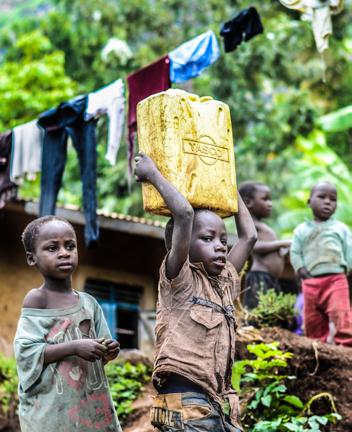
and workers across Africa. “We must protect children’s rights and encourage their return to school. The African Union’s 10year plan of action must be implemented at all levels to foster the continent’s development and protect children’s rights”, commented Guy Ryder, ILO Director-General. At the live event, panellists zoomed in on the vast scope of the problem in Africa and discussed many underpinning issues surrounding access to quality education for all, fostering social protection, creating decent work opportunities for adults, and raising awareness.
Putting plans in place
Ms Cynthia Samuel-Olonjuwon, ILO Assistant Director-General and Regional Director for Africa, made valid points regarding the collaboration between African Union (AU) and International Labour Organisation (ILO) partners, stating:
“This should not be seen as a cost. It is an investment. An investment in creating a better future for all.”
Partners, investors and individuals at regional, national and organisational levels, have been inspired to pledge their commitment to cause by pin pointing tangible actions they will take by December 2021 in order to assist in ending child labour. The final date for the submission of all pledges is 15 May 2021. As part of the 2021 campaign, key players have been invited to document breakthroughs and goals achieved throughout the year, using video recordings, interviews, and blog posts and impactful storytelling.
As part of the next steps, the Minister of Labour of the Republic of South Africa, H.E. Thembelani Thulas Nxesi, announced that the 2022 Global Conference on Child Labour will be held in Africa for the first time, and hosted by South Africa. The Flagship projects include, amongst others infrastructure, education, science, technology, arts and culture, as well as initiatives to secure peace on the continent.
The flagship projects of Agenda 2063 focus on the following:
• Integrated High Speed Train Network • Formulation of an African Commodities Strategy • Establishment of The African Continental Free Trade Area (AFCFTA) • The African Passport and Free Movement of People • Silencing The Guns By 2020 • Implementation Of The Grand Inga Dam Project • Establishment of a Single African Air-transport Market (SAATM) • Establishment of an Annual African Economic Forum • Establishment of The African Financial Institutions • The Pan-african E-network • Africa Outer Space Strategy • An African Virtual And E-university • Cyber Security • Great African Museum • Encyclopaedia Africana
Find more information about the Ten Year Action Plan on Eradication of Child Labour, Forced Labour, Human Trafficking and Modern Slavery in Africa (20202030), see Agenda 2063-SDG Target 8.7 at: www. au.int n
COVID-19 VACCINE UPDATE
BY JESSIE TAYLOR

Jabs in sight:
South Africa’s vaccination plan set to gain speed over the next several months
The South African public could start receiving their jabs against the Coronavirus as early as next month. This was announced by President Cyril Ramaphosa’s Cabinet following a virtual cabinet meeting on Wednesday 24 March, in which deadlines for South Africa’s threephased vaccination roll-out plan were released. The plan aims to begin rolling out vaccines to essential workers and those older than 60, as South Africa faces down the potential of a third wave this winter.
Prioritising the healthcare system
The national Department of Health intends to start the second phase of the vaccination, which will focus on vulnerable groups in society, from 18 May. The vaccination rollout has been structured into three phases. The first phase, which is currently underway, aims to vaccinate healthcare workers. This phase, which targets over 1,5-million (608 295 registered) healthcare workers across the country, started on 17 February and is scheduled to run for three months, until 17 May.
“The Department of Health is on track to vaccinate all healthcare workers by the end of Phase 1”, Cabinet said in a meeting. Phase 1 was initially delayed after the first batch of vaccines received by the South African government, the Oxford-AstraZeneca CoviShield, was found to be less effective against a predominant Covid-19 variant found in the country. The expedited roll out of the vaccine doses, an open-label research programme, called Sisonke, was launched to make the Johnson & Johnson vaccine immediately available to healthcare workers. Sisonke allows the vaccine to be available under research conditions while the vaccine is undergoing the licensing process in South Africa. The South African Health Products Regulatory Authority (SAHPRA) has approved the use of the Johnson & Johnson vaccine for the Sisonke Programme while it processes the full licensing.
It is expected that vaccination registrations with SAHPRA will be completed in April. At the moment, under the Sisonke programme, South Africa receives around 80 000 doses every two weeks. An additional shipment of around
200 000 doses is expected to arrive in April. The vaccination roll-out programme is currently running at 54 vaccine sites across the country, and over 200 000 healthcare workers have already received doses of the vaccine. The programme is currently delivering between 5000 and 10 000 doses a day to healthcare workers, which authorities say is on track with their planned targets.
Targeting essential services
However, the rate of vaccination is expected to increase during the second phase of the rollout plan and will likely increase to between 120 000 and 150 000 doses delivered daily. The second phase will be implemented over six months, between 18 May and 17 November. These sectors include mining, hospitality, the taxi industry, retail (including the informal sector such as spaza shops) and media. These sectors will be refined in consultation with the National Economic Development and Labour Council (Nedlac).
During the second phase of vaccinations, the health department will increase the number of vaccination sites to 2085. Private sector sites will be included, to improve the efficiency and speed of the vaccination rollout programme.The second phase of the rollout is also expected to include those with comorbidities or those older than 60, as well as those living in congregate settings such as care facilities and correctional centres.
“Cabinet would like to reassure South Africans of the capacity of the Department of Health, in partnership with the private sector, to undertake a mass vaccine rollout when Phase 2 gets underway,” the Cabinet said in a statement. The first two phases of the rollout plan will focus on reducing pressure on the healthcare systems, preventing deathsw and ensuring the economy can recover from the pandemic. Once this is in place, the remaining population will become the focus of the programme, to ensure 67% are vaccinated. This percentage is the number health experts agree will ensure population or herd immunity against Covid-19.
The South African government had initially hoped to have the vaccinations completed by the end of the year, but this deadline has been moved out to early 2022. Phase 3 of the vaccination rollout plan will also run over three months and will aim to vaccinate those not included in the first two phases – an estimated 22-million people. This phase will run from November to February next year.n
During this period, the health department aims to vaccinate over 13 million South Africans that fall into vulnerable groups or are classified as essential workers. This includes essential workers and those who work in sectors that are critical for economic recovery.

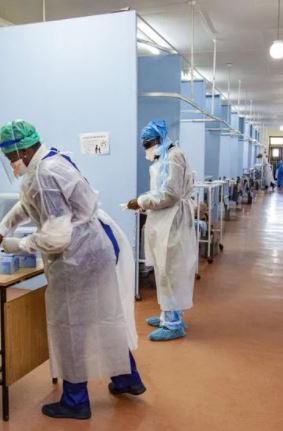
FOCUS ON HEALTHCARE
BY JESSIE TAYLOR
Celebrating
healthcare & frontline workers


On the frontline: A year after the pandemic, healthcare workers continue to rally against Covid-19
South Africa’s healthcare workers, along with other essential frontline workers, face the highest risk for infection from the Coronavirus. However, these workers have continued to hold the line in the county’s fight against the pandemic.
As South Africa stares down a potential third wave, Minister of Health Dr Zweli Mkhize has lauded the efforts of healthcare workers, saying they have helped lessen the effects of the Covid-19.
Marking the first anniversary since Covid-19 hit South African shores, Hon. Mkhize recalled how his morale was boosted by nurses at Grey’s Hospital in Pietermaritzburg, where the first case of Covid-19 was treated. A team of nurses started signing that they did not fear the virus and would be ready to nurse all patients – an act that filled the health minister with hope.
Hon. Mkhize has publicly thanked all frontline workers, including doctors, nurses, physiotherapists, psychologists, medical technicians, pharmacists, porters and general workers, lab technicians, environmental health practitioners, dentists and dental technicians and optometrists for their service.
He has also remarked on their commitment and resilience. It is these characteristics that have been most marked in the response by healthcare workers. Many have been left exhausted, physically and mentally, by the toll the virus has taken, but have continued to serve at healthcare facilities.
“To those of our health workers who have braved it all to face the challenge of our COVID-19 enemy, we say thank you, we say thank you for your dedication,” Hon. Mkhize said.
“We have seen … health workers holding each other, comforting each other and crying sometimes when they lose one of their colleagues … your hard work has not gone unnoticed. We want you to know SA is grateful for you, the African continent is grateful to you and humanity as a whole is grateful to you. You are the unsung heroes of our struggle against an unseen enemy. You have not flinched, you have made sure that humanity is saved.”
First responders
Despite personal risks, healthcare workers are among those at highest risk for contracting any virus or infectious diseases, according to the National Institute of Occupational Health, and this is no different with Covid-19.
One of the classes of healthcare workers most impacted by the pandemic has been the healthcare system’s first line of defence, and those who provide the most one-on-one care to ill patients: nurses. Nurses have been a critical component in the treatment of Covid-19. They make up around 65% of the healthcare workforce and form the backbone of South Africa’s health system, according to a report released by the Human Sciences Research Council.
“Nurses are the backbone of any health system. Today, many nurses find themselves on the frontline in the battle against Covid-19. This report is a stark reminder of the unique role they play, and a wakeup call to ensure they get the support they need to keep the world healthy,’ the report stated. The report found that healthcare workers across all provinces felt they were at risk for contracting Covid-19. However, nurses believed they were at a higher risk, a perception that has been proven correct based on the infection rates among healthcare workers. While reports on the number of healthcare workers have been sporadic, in August last year over half of all infections among healthcare workers had been in nurses.
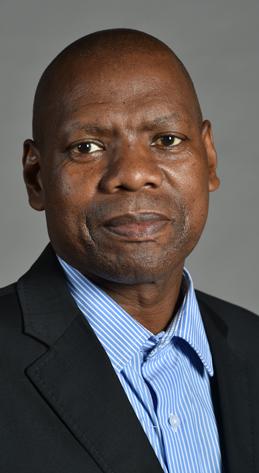
Comparatively, around 6% of the positive Covid-19 cases had been recorded in doctors. According to the report, healthcare workers felt their highest risk factors for infection were, after their profession, the general public not following guidelines and a lack of personal protective equipment. But a key concern for healthcare workers is passing the virus on to their loved ones – and nurses were the most concerned about this, the report found. Also, one in five healthcare workers said they were severely distressed by the idea of potential infection.
The public sector had been overwhelmingly affected by infections among healthcare workers, with more than 70% of cases reported in the public sector. However, South Africa’s cases remain low compared to the global average – possibly as a result of strong efforts by the government to bolster the health services. According to a statement released by the national Department of Health, the overall infection rate amongst health care workers as compared to the total number of cases identified nationally is 5%. This is well below the global average of 10%.
To address the concerns of healthcare workers, and support the healthcare system, these frontline workers have been prioritised for the country’s vaccine rollout. As of the beginning of April, almost 270 000 healthcare workers had been vaccinated – just one of the ways the government is demonstrating its commitment to protecting frontline workers.
“This workforce remains at the front line of our battle against Covid-19 and it is in our interest as government to ensure that they are protected,” Hon. Mkhize.n
Dr Zwelini Lawrence Mkhize
Minister of Health
ADVERTORIAL
BY BOXFUSION
Citizen Engagement For the 21st Century
Citizens are at the heart of why the government does what it does. However, until the recent proliferation of smart devices and increased connectivity, public entities had to manage interactions with taxpayers through cumbersome paper-based processes and inperson engagements. In the digital age, citizens demand a higher level of interaction and authenticity from government institutions.
Voters use apps daily to manage most things in their lives, from social interactions to ordering outfits and groceries. Understandably, they are seeking the same level of efficiency from their local municipalities.
Enter the South African solution designed for the South African Landscape
As an answer to the communication gap between citizens and municipalities, Boxfusion designed the SmartGov for Citizens app. This platform boasts rich features which allow for two-way communication, not only between citizens and officials, but call centres and suppliers as well.
Citizen engagement in the cloud
This cloud-based solution allows citizens to upload and report issues such as burst water pipes, fallen trees and electricity outages, as well as emergencies like fires, to their nearest municipal call centre.
The app features rich media capabilities, which allow for photos to be uploaded, while the geolocation function enables citizens to tag exactly where an issue is, making it even easier for contractors to find and fix the problem.

This capability also allows citizens to view logged issues and resolutions thereof. The SmartGov for Citizens app acts as a central repository for citizens to find the contact information of their local representatives, nearby service points such as clinics and police stations, and follow municipal accounts on social media.
Municipalities benefit too
While this app has been designed to improve citizen engagement, it also assists municipalities with managing their caseloads and engaging service providers to resolve logged calls. Tickets that have been issued can automatically be assigned to field workers, sending notifications directly to their mobile devices while they are in the field. This can then be tracked until the problem has been resolved, finally closing the communication loop by alerting the citizen once the job has been completed.
Service delivery on a roll
The SmartGov for Citizens app is hosted in the Cloud, which means minimal downtime, and an always-on engagement platform for citizens and officials alike. Because it is cloudbased and easily procured, it can be rapidly rolled out within six weeks to municipalities, such as in OR Tambo in the Eastern Cape (Mthata, Port St Johns, Qunu) and ILembe in KwaZulu Natal (Ballito, Umhlanga, KwaDukuza) where the solution is currently implemented, among others.
This is just one of the many Boxfusion solutions currently implemented in the public sector as part of assisting the government on its digital transformation journey. n
Contact:
Email: sales@boxfusion.co.za Tel: (012) 940-1300. Website: www.boxfusion.co.za






